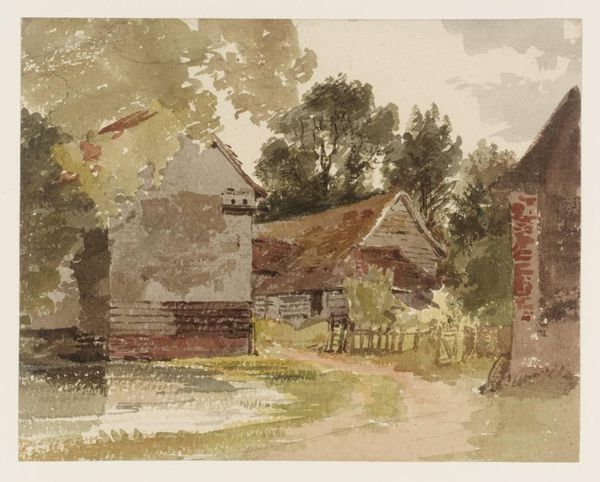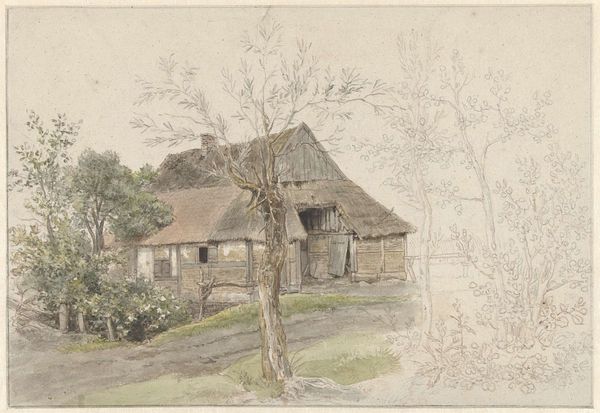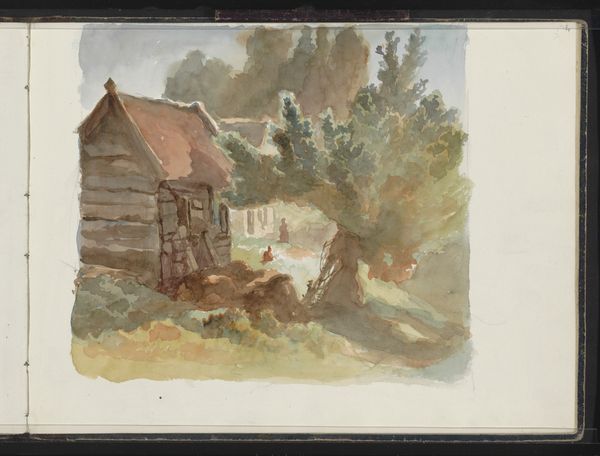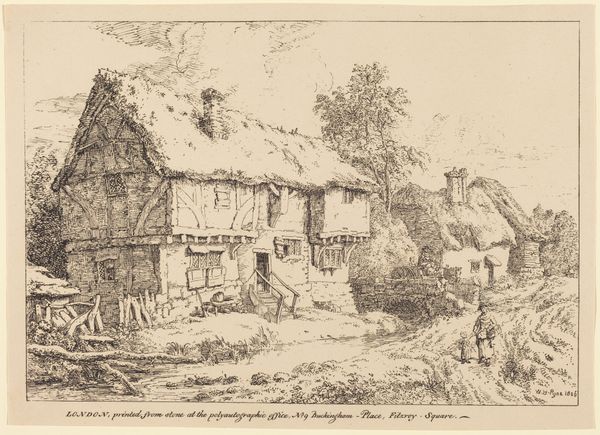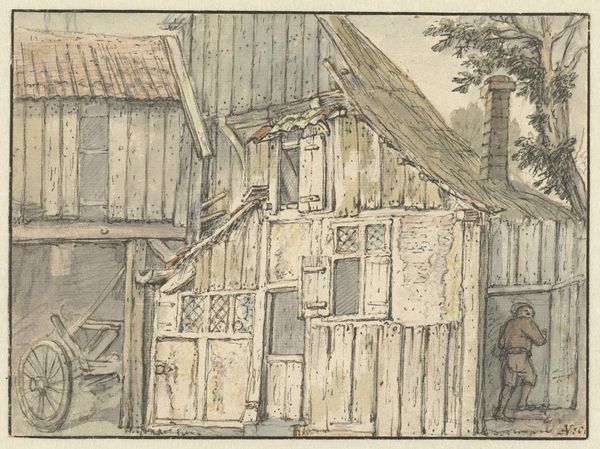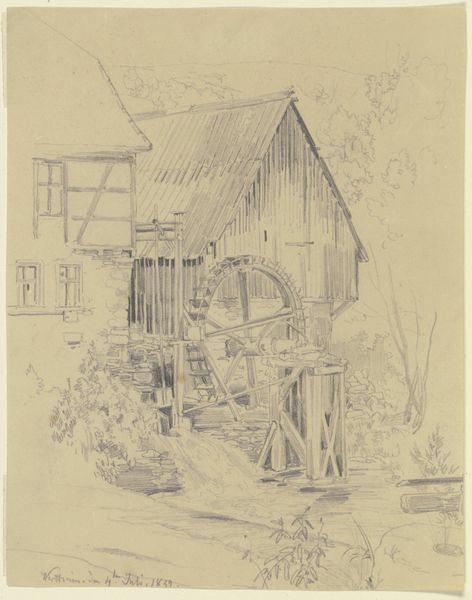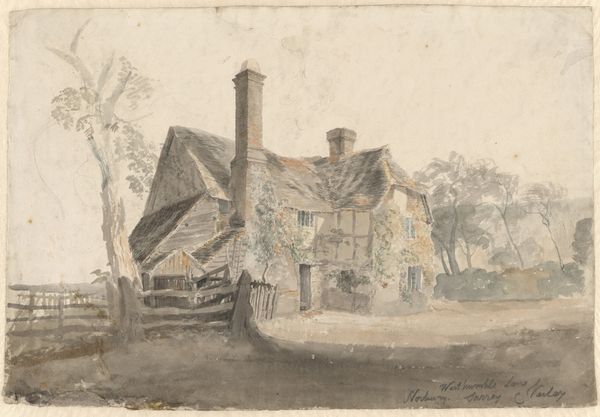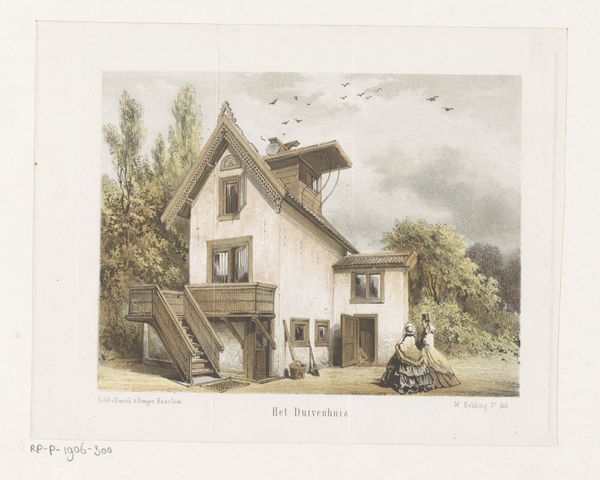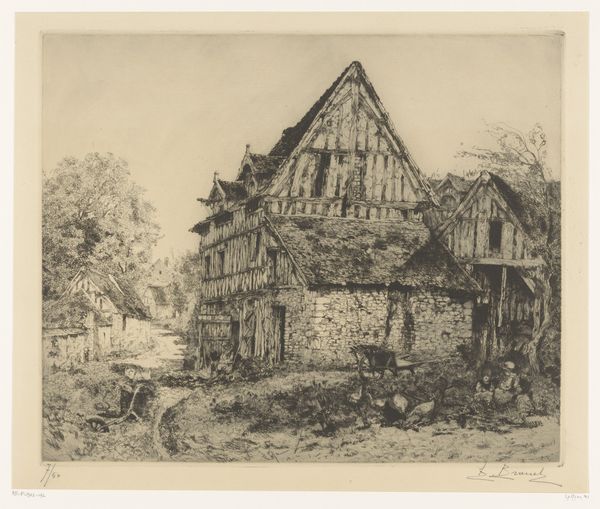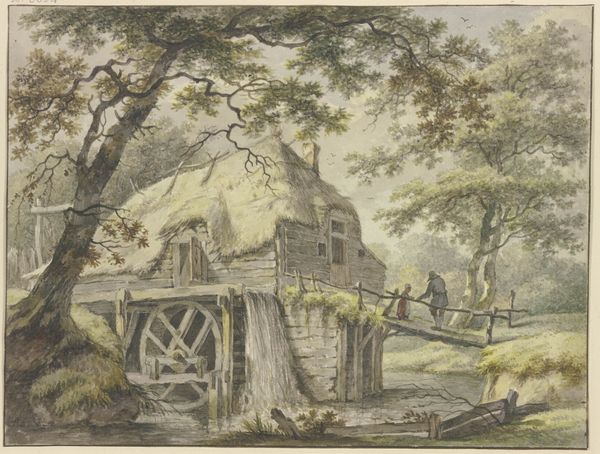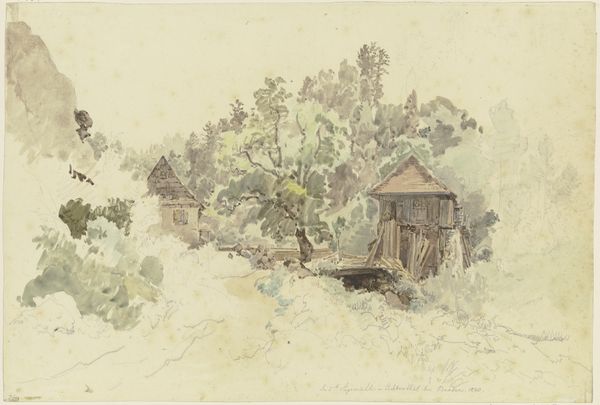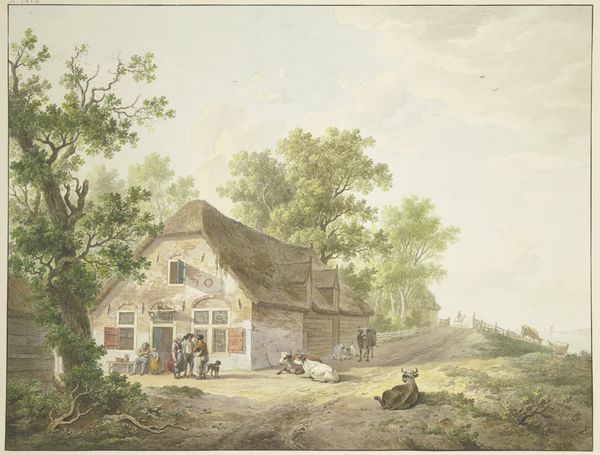
drawing, coloured-pencil, paper, architecture
#
drawing
#
coloured-pencil
#
16_19th-century
#
landscape
#
paper
#
coloured pencil
#
watercolor
#
architecture
Copyright: Public Domain
Curator: Let's take a look at "Timber Framed Watermill", a drawing rendered in colored pencil and watercolor on paper. It is held here at the Städel Museum. What's your first impression of this piece? Editor: My initial impression is of stillness, almost melancholy. The color palette feels muted, almost somber, and the architecture blends almost seamlessly into its landscape setting. Curator: Absolutely. Given the material constraints of 19th-century landscape drawings, Rumpf really focused on architectural detail. We can almost trace the construction process, how the timber frames fit together and the materials for the structure itself. Editor: And that meticulous focus underscores the human presence—or, perhaps, absence. We’re prompted to think about labor here, the handiwork in constructing and maintaining the mill. And who benefitted from this milling? What was the social stratification present in this industry? The wisp of smoke even implies people currently inhabiting or working here, right? Curator: That's insightful. We are forced to consider how integral watermills were to local economies, processing grain and driving machinery that impacted both labor practices and gendered dynamics. While landscape often presents nature as untouched, this actively merges natural resources with labor to underscore industrial practice. Editor: And this merging raises critical questions about humanity’s relationship with natural resources, then and now. Thinking about this work through a contemporary lens encourages dialogue surrounding ecological sustainability, right? Whose labor sustains progress, and what are its costs? This piece isn't just a scenic view, it reflects deeper societal structures that still affect us today. Curator: Exactly. Seeing this work for me speaks volumes about material choices and resource constraints placed upon those pursuing the arts. When reflecting on this drawing, what aspects do you think will stay with visitors the most? Editor: Its quiet power, I think. The drawing invites a moment of quiet reflection, compelling the audience to contemplate not only what’s visually present but what stories this image invites surrounding community, labor, and ecology. It really allows for reflection on material histories through architecture, which is often absent when viewing historical works.
Comments
No comments
Be the first to comment and join the conversation on the ultimate creative platform.
